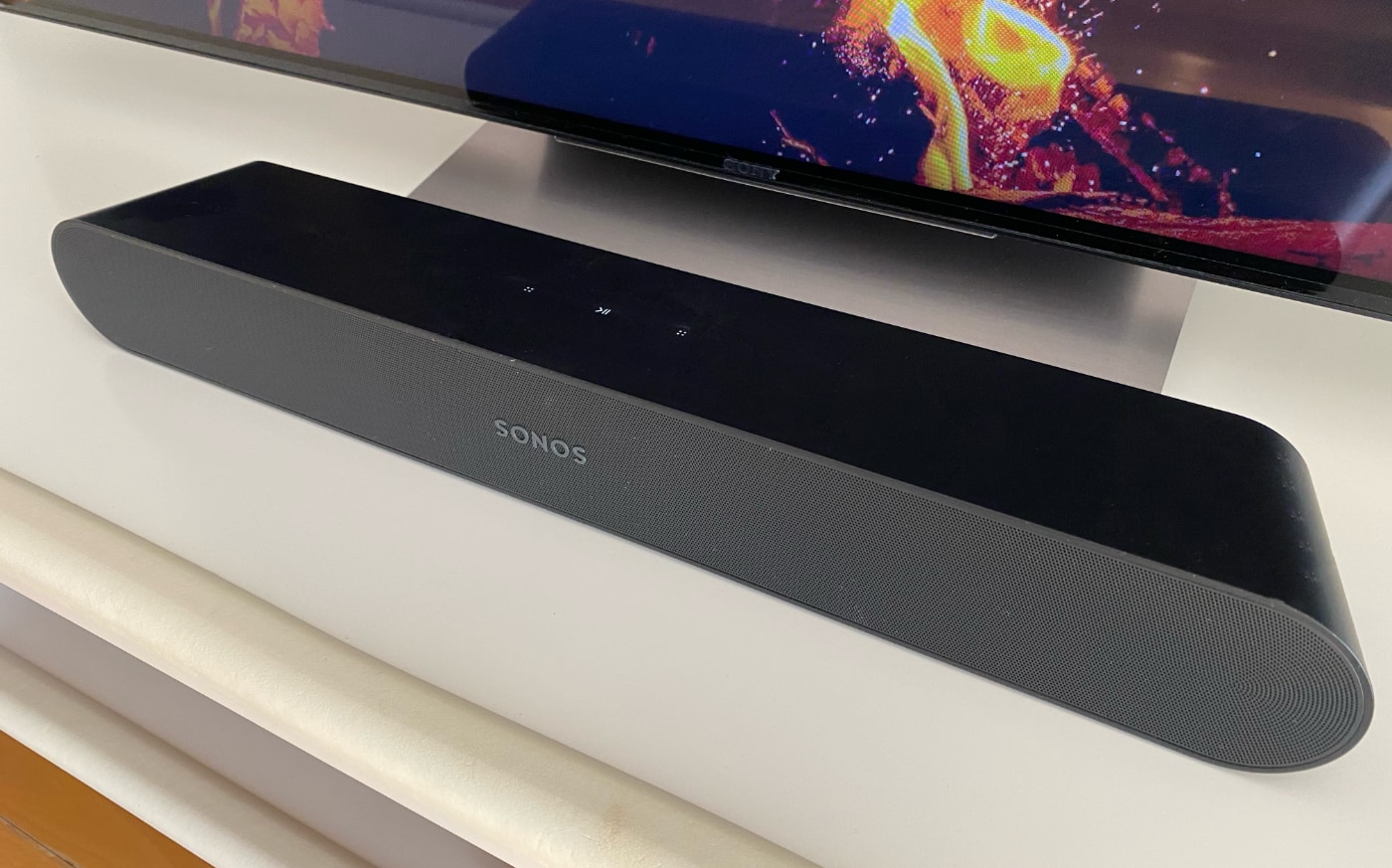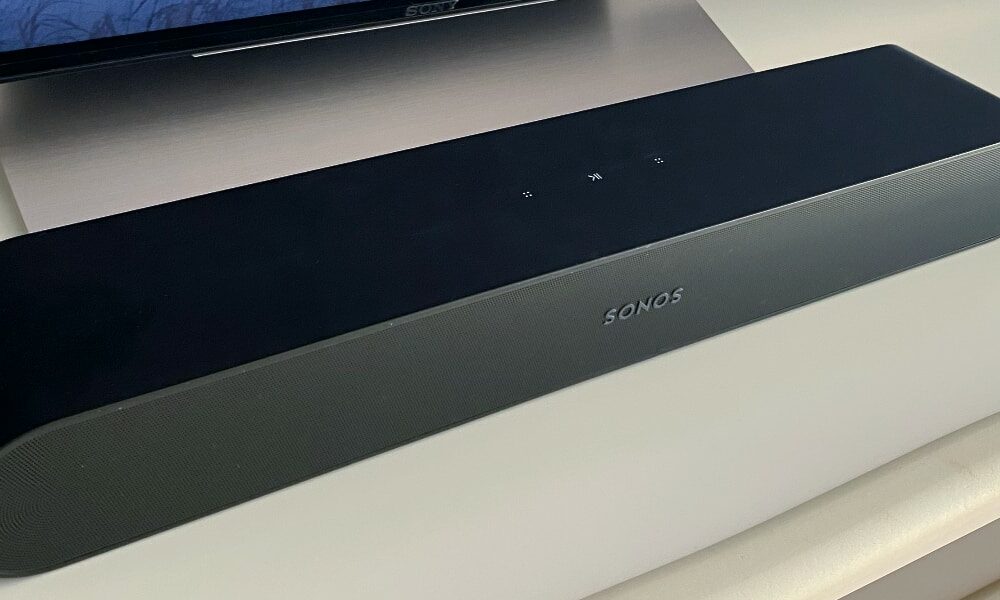Almost all modern televisions, including very high end ones have the same problem: sound that is not up to par than expected. The reason is as simple as it is powerful: physical. Installing a competent audio solution on such a thin device is a daunting task that rarely succeeds.
If we add to this plastic as the main construction material (of greater or lesser quality, but plastic), limitations in terms of insulation, the need to keep consumption under control or the problems of many models to handle brand new multi-channel sound, well a new TV can be accompanied by a grimace of disappointment and the need to find a solution as soon as we demand sound.
At this point comes the new Sonos Ray, simple product, very easy to use and install and reasonably priced. A somewhat risky bet by a brand considered elitist to expand its audience and serve as a gateway to one of the best multimedia ecosystems on the market.

Unlike other bars, the Sonos Ray projects sound only to the front and can be installed in very tight spaces.
Sonos Ray is a soundbar from compact size, 56 cm long, 9.5 cm wide and 7 cm high. With these numbers, it is easy to find the space under the TV, a natural place where it can offer maximum performance (be very careful with innovation here, especially with furniture under the TV, which can spoil the experience if we do not place a bar). on the edge).
The best thing that can happen to a soundbar is to go unnoticed And this Sonos Ray does just that: touch controls you’ll probably only use for testing, and a discreet LED you can program or turn off completely to forget it even exists.
Inside the Sonos Ray are four front-facing Class D digital amplifiers, two midwoofer elliptical and two tweeters andn extremes. The sound is separated and diffused forward, creating a sense of spaciousness that, together with the Sonos processing, creates a soundstage that is as rich as possible, but without excessive artificiality or resorting to “tricks” such as too much bass. This is about respect and enhance, without confusion, the original sound source.

Sonos decided to make a curious decision, to say the least bypass without HDMI connection and use an optical cable. In theory, the reason is to use the widest possible interface and connect even older TVs without HDMI ARC. In practice, for many years, every television has at least one interface of this type, and there is no technical reason to return. In its favor, the bandwidth offered by the optical cable is more than sufficient given that the bar it doesn’t support Dolby Atmos or Dolby True HD, so there are no limitations.

The setup process is as easy as with any Sonos. We can control the bar with any infrared remote control (even two at the same time, in my case TV and Apple TV) by simply pressing the volume button for a few seconds and pairing. Everything is done step by step, through a very careful application that offers all the options we need to get the most out of the device.
Sonos offers basic but sufficient options to adjust the sound to our taste.
It is worth emphasizing night sound system, which prevents sudden changes in volume and enhances dialogue. With this alone, without the need to configure anything else, an exponential jump can be observed with respect to the sound offered by default by any television, even watching a DTT channel.
Of course, the Sonos Ray includes an exclusive feature A real game. With it and with the help of our mobile, the bar is able to recognize the dimensions and obstacles of the room where we have it installed and optimize the sound based on many parameters. It’s no wonder or replacement for a multi-channel multi-speaker audio system, but it’s noticeable and beats any bar in this price range.

The Sonos Ray offers a clear and accurate sound under any circumstances and we quickly realize how we can enjoy a series or a movie without having to constantly turn up the volume to better understand the dialogue or avoid the “noise” of large explosions.
From my point of view, it’s a soundbar interesting for consumers of series and movies. Although it defends itself with music and serves as a device to create an environment, it is not the strong point of the device, and that is where the nuances and depth that cannot be resolved by software are most evident.
Apparently, it makes no sense to compare it to multi-speaker solutions but as a unique device it has few rivals. It offers deep bass even without a dedicated subwoofer (it uses a reflection solution that positively surprised me) and perhaps its biggest handicap is the maximum volume, which is not very high, but more than sufficient for the medium-sized rooms it is aimed at.
Like every Sonos product, it uses WiFi (or Ethernet) connectivity, which offers us the ability to play music from any device and acts as one more speaker. In addition, it is compatible with the multiroom function, so we can add other speakers in the family, such as Sonos One or Sonos SUB, to improve the sound. It’s interesting, but more expensive and more complicated than going straight for a better model like the Sonos Beam.

Conclusions
Sonos’ commitment to reach the general public is correct and in its price range, in my view, the best on the market. You can find options for less than €299 with more power or even an external subwoofer, but in terms of sound quality it is very difficult to offer more for less.
Sonos orients its product to a The general public, has little interest in the differences between optical cable and HDMI ARC, or what Dolby Atmos surround sound means. It is aimed at people who believe that 299 euros is a fair price for exponentially improving their audio experience while watching their favorite series or movies. By the way, it gives you an excuse to join the Sonos ecosystem and, who knows, continue to buy Sonos products in the future.

Finally, the Sonos Ray is a great choice for an interesting price. Worth highlighting is the work done to improve the intelligibility of dialogues, precisely the weak points of the audio system of most televisions. It’s fantastic for movies, series, video games or watching (and listening to) DTT.
To all this we have to add a fantastic app, exclusive options like Trueplay and integration with the most popular music streaming platforms. All this with a top upgrade policy and above average build quality.
Between negative points lNecessary compromises to keep it under 300 euros: it lacks support for DTS: X or Dolby Atmos formats, we need a TV remote control, and it doesn’t offer the option of HDMI. In any case, our assessment is clear: one of the best sticks you can buy at this price and recommended product for anyone looking to make the leap without spending much more.


Final assessment
ABSTRACT
The Sonos Ray is a fantastic choice at an attractive price. Ideal for users who want to improve the sound of their TV in the easiest way.
